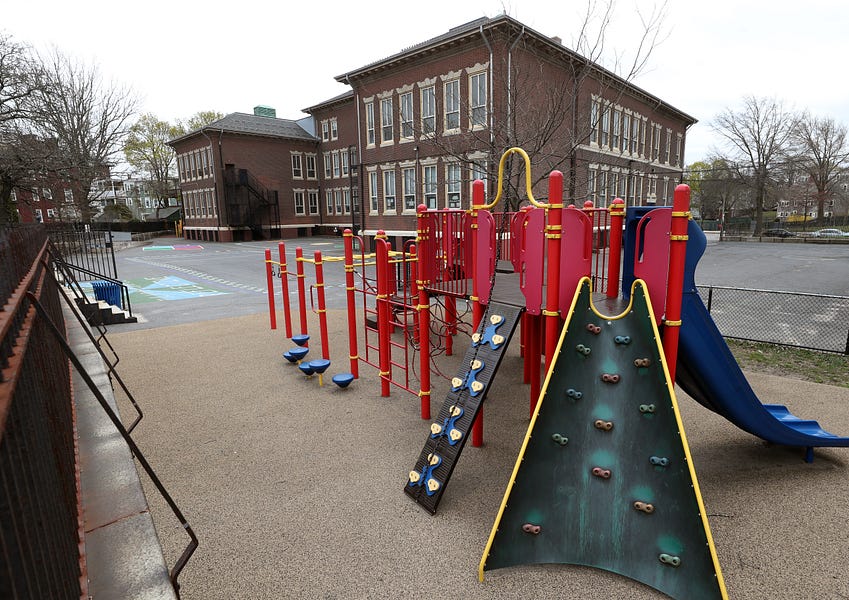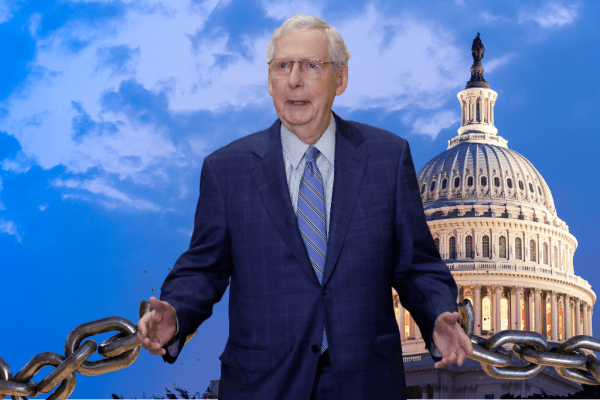Parents are understandably concerned about the risks of children going back to school in the fall. Echelon Insights recently reported that 65 percent of American parents say that “schools should remain closed until they are certain there is no health risk, even if it means students fall farther behind.” Los Angeles schools chief Austin Beutner declared in early June, “Science tells us there is currently no way to be back at school facilities without risk.” The American Association of School Administrators says that 94 percent of superintendents aren’t sure when their schools will reopen, while educational leaders insist that schools can’t reopen safely without more funds.
There are certainly potential risks—to students, staff, and public health—to reopening. Yet evidence suggests that these are less severe than some imagine. A six-nation study published in Nature Medicine, for instance, finds that youth under age 20 are half as susceptible to infection as adults. More than 70 nations around the globe have already lifted nationwide school closings, and countries where schools have been reopened for more than a month—including Denmark, Germany, Australia, and Finland—have not experienced any resulting resurgence in cases.
While there are certainly risks to reopening, those must be weighed against the risks of not reopening.
Social isolation has been devastating to students’ social and emotional well-being. While the full extent of the shutdown’s impact on mental health can’t yet be fully known, early portents are grim. In April, the Department of Health and Human Services’ “Disaster Distress Helpline” recorded a 1,000 percent (!) increase in call volume compared to April 2019. A study of 2,300 Chinese elementary school students in JAMA Pediatrics found that 23 percent reported having depressive symptoms during the shutdown, a 35 percent jump from the norm. And a recent poll of American teens found that more than 20 percent report feeling disconnected from their school communities and classmates, 25 percent report that they’ve lost sleep due to worry, and 30 percent report that they feel unhappy or depressed.
Children in unsafe or abusive home environments have also lost access to vital supports. Since the start of the pandemic, there has been an alarming drop-off in reporting on child abuse (during a period of extraordinary stress and anxiety), as education personnel are the most common reporters of child maltreatment—accounting for 21 percent of cases—followed by police and social services. One early estimate suggests that more than 200,000 cases of child abuse went unreported in March and April due to the pandemic. Shutdowns can be especially traumatic for youth, in general, given that they are still in the midst of emotional and cognitive development. Indeed, in 2013, University of Kentucky researchers specifically studied the effects of quarantine on children (interviewing 398 parents in areas highly affected by SARS and H1N1) and found that post-traumatic stress scores were four times higher in children who had quarantined compared to those who had not.
And traditional health needs are going unmet. Pediatricians have noted huge drop-offs in vaccine administration for diseases that pose significant risks to children. Pediatric electronic health record company PCC reported a 50 percent drop in mumps and rubella shots; a 42 percent drop in diphtheria and whooping cough shots; and a 73 percent drop in HPV vaccines. CDC data indicate that roughly 2.5 million fewer routine pediatric vaccinations were administered in the first month of the national emergency than in the same period last year. Reopened schools could both assist with routine care and signal to parents that it’s time to resume scheduling checkup appointments with their children’s pediatricians.
Continued closure also means, of course, that students will suffer academically. Researchers at NWEA, Brown, and the University of Virginia have estimated that students will begin the next school year with just two-thirds the learning gains in reading and as little as half of the gains in math that we would normally expect. A McKinsey analysis estimates that another semester of remote learning would mean the typical student would lose six and a half months of learning, when all is said and done, and calculates that low-income students would suffer more than 12 months of learning loss (!). (Two things are going on here: One is that low income students historically see great summer learning losses than their affluent peers due to fewer summer enrichment opportunities and household resources. Second, districts serving low income kids tended to provide less rigorous, less consistent instruction this spring.)
We must carefully consider the risks that both closure and reopening may pose to students and school staff. For instance, as of mid-June, the number of school-aged children (ages 5–17) who have perished from COVID-19 in the U.S. stood at 24, out of more than 110,000 coronavirus deaths. While each one of those young lives lost is beyond heartbreaking, risks must be assessed in context. Consider, for example, that in 2016, car accidents claimed the lives of 4,074 youths (ages 1–19) and drowning 995—far more than COVID-19.
Meanwhile, at least for the 70 percent or so of school staff who are under age 55 and are not immunocompromised, returning to school may be less risky than returning to work in adult workplaces. As Netherland’s National Institute for Public Health and the Environment has reported, “The virus is mainly spread between adults and from adult family members to children. The spread of the virus among children or from children to adults is less common.”
The health concerns related to COVID-19 are real. But it’s important to judge the risks of reopening side-by-side with the risks of continued closure. Those who would keep schools shuttered come September need to be sure they fully appreciate the costs of doing so.
Frederick M. Hess is director of education policy studies at the American Enterprise Institute. Matthew Rice is a research assistant at AEI.






Please note that we at The Dispatch hold ourselves, our work, and our commenters to a higher standard than other places on the internet. We welcome comments that foster genuine debate or discussion—including comments critical of us or our work—but responses that include ad hominem attacks on fellow Dispatch members or are intended to stoke fear and anger may be moderated.
You are currently using a limited time guest pass and do not have access to commenting. Consider subscribing to join the conversation.
With your membership, you only have the ability to comment on The Morning Dispatch articles. Consider upgrading to join the conversation everywhere.